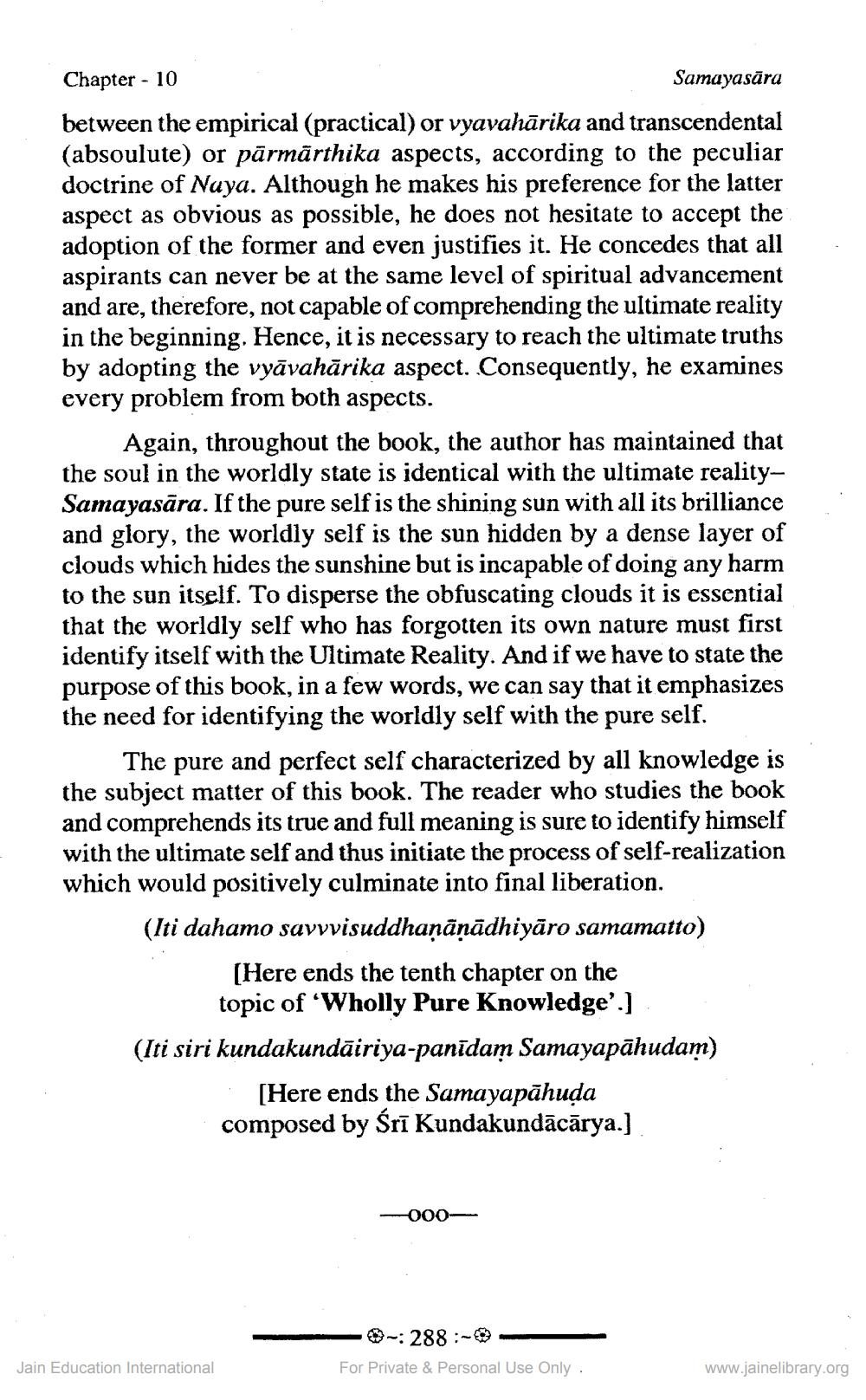________________
Chapter - 10
Samayasāra between the empirical (practical) or vyavahārika and transcendental (absoulute) or pārmārthika aspects, according to the peculiar doctrine of Nuya. Although he makes his preference for the latter aspect as obvious as possible, he does not hesitate to accept the adoption of the former and even justifies it. He concedes that all aspirants can never be at the same level of spiritual advancement and are, therefore, not capable of comprehending the ultimate reality in the beginning. Hence, it is necessary to reach the ultimate truths by adopting the vyāvahārika aspect. Consequently, he examines every problem from both aspects.
Again, throughout the book, the author has maintained that the soul in the worldly state is identical with the ultimate realitySamayasāra. If the pure self is the shining sun with all its brilliance and glory, the worldly self is the sun hidden by a dense layer of clouds which hides the sunshine but is incapable of doing any harm to the sun itself. To disperse the obfuscating clouds it is essential that the worldly self who has forgotten its own nature must first identify itself with the Ultimate Reality. And if we have to state the purpose of this book, in a few words, we can say that it emphasizes the need for identifying the worldly self with the pure self.
The pure and perfect self characterized by all knowledge is the subject matter of this book. The reader who studies the book and comprehends its true and full meaning is sure to identify himself with the ultimate self and thus initiate the process of self-realization which would positively culminate into final liberation. (Iti dahamo savvvisuddhanānādhiyāro samamatto)
(Here ends the tenth chapter on the
topic of 'Wholly Pure Knowledge'.) (Iti siri kundakundāiriya-panīdam Samayapāhudam)
[Here ends the Samayapāhuda composed by Śrī Kundakundācārya.).
-000
- -:288:For Private & Personal Use Only:
Jain Education International
www.jainelibrary.org




